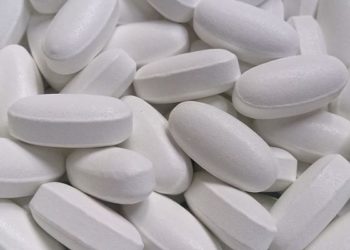Prescription drug monitoring programs modestly reduced opioid use
1. In this interrupted time-series analysis of the of the pre and post-intervention time periods of Florida’s Prescriptions Drug Monitoring Program (PDMP), this intervention had only modest reductions in total volume and prescriptions of opioids, and volume of opioids dispensed per transaction. A similar trend was seen in comparison state Georgia (which did not have a PDMP), but not to the same degree.
2. The results in Florida were mostly evident in the highest percentile of opioid use and prescriptions.
Evidence Rating Level: 2 (Good)
Study Rundown: Prescription narcotics are one of the most abused drugs in the US. In the mid-2000s, Florida was at the center of this epidemic. To address this, state legislatures introduced a Prescription Drug Monitor Program (PDMP), which is an electronic database to collect and monitor narcotic prescription drugs within the state. Elements of this were introduced in 2010, and became fully operational in 2011. The purpose of this was to monitor so-called “pill mills” to identify prescribers’ dispensing habits and to identify patients who were “doctor shopping” for narcotics. This study was conducted to determine if the introduction of the PDMP had an impact on narcotic prescriptions in Florida, in relation to neighboring state, Georgia, which did not have a similar monitoring program. The results of the study showed that in an interrupted time-series analysis of Florida, PDMPs were associated with only modest reductions in total volume and prescriptions of opioids, and volume of opioids dispensed per transaction. A similar trend was seen in comparison state Georgia, but not to the same degree. The results in Florida were mostly evident in the highest percentile of opioid use and prescriptions.
While comparison of prescriptions and opioids in a time-interrupted manner can shed light on the effectiveness of policy decisions, the results of these kinds of policies may not be realized for several years. As a result, re-evaluating this kind of study a few years after the introduction of PDMP may provide greater insight into their effectiveness.
Click to read the study, published today in JAMA Internal Medicine
Relevant Reading: Prescription opioid usage and abuse relationships: an evaluation of state prescription drug monitoring program efficacy
In-Depth [interrupted time-series]: This study was conducted by obtaining anonymous prescription narcotic drug records from major pharmacies in Florida and Georgia. The time period, in relation to the introduction to the PDMP, was as follows: 12-month pre-intervention period, 3-month intervention period, and 12-month post-intervention period. Georgia was used as a comparison state since it did not have a similar PDMP. There were four outcomes evaluated: quantification of total opioids in morphine milligram equivalents (MMEs), mean MME per transaction, mean days’ supply per transaction, and quantification of total opioid prescriptions dispensed.
The final cohort had 2.6 million patients, 431,890 prescribers, and 2829 pharmacies. At baseline, the opioid volume, mean MME prescribed, and days supply provided were higher in Florida compared to Georgia. Comparing pre-intervention to post-intervention in Florida, there was a 4% decrease (from 327.2 to 313.9kg) in total opioid volume, 5.7% decrease (from 54.88 to 51.74mg) in mean MME per transaction, and a 3.8% increase (from 18.74 to 19.46 days) in the mean days supply per transaction. The results in Georgia, respectively, were 2.3% decrease, 4.7% decrease, and 5.7% increase.
Image: PD
©2015 2 Minute Medicine, Inc. All rights reserved. No works may be reproduced without expressed written consent from 2 Minute Medicine, Inc. Inquire about licensing here. No article should be construed as medical advice and is not intended as such by the authors or by 2 Minute Medicine, Inc






![Adverse pregnancy outcomes associated with thrombophilias [Classics Series]](https://www.2minutemedicine.com/wp-content/uploads/2015/07/Classics-2-Minute-Medicine-e1436017941513-75x75.png)

